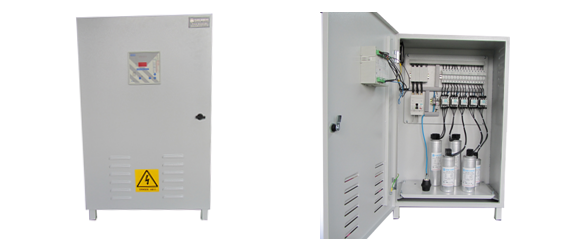
|

|
|
|

|
Phone: 051 327- 430, 327-431
Brace Pisteljica 1
78000 Banja Luka
Email: info@kors-doo.com
|

| | |

|

|
|
|

|

|

|

|
|

|
REACTIVE ENERGY COMPENSATION
COMPLETE REACTIVE ENERGY COMPENSATION cabinets
POWERS up to 1000 kVAr

ENERGY EFFICIENCY THROUGH
REACTIVE ENERGY COMPENSATION
All electricity consumers who create magnetic fields in their work are called inductive consumers. Such consumers are: electric motors, transformers, ballasts for fluorescent lamps, inductive electrothermal furnaces, welding machines, etc.
The energy required to form a magnetic field in inductive consumers is called reactive electricity.
The electricity used by inductive consumers consists of:
- of active electricity P, which essentially turns into some useful work. This energy is measured in kWh
- reactive electric power Q, which creates a magnetic field, which is the basis for the operation of inductive electric motors. This energy is measured in kVArh
Reactive energy is part of the consumed energy that does not translate into useful work.
Therefore, these consumers consume active and reactive energy while effectively using only one part of the energy, namely active.
The reactive energy required for the operation of inductive consumers can be obtained otherwise than through the distribution network. The reactive energy required for the operation of inductive AC consumers is obtained from the capacitors in parallel, that is, the capacitor batteries. This process is called reactive energy compensation.
BENEFITS OF ENERGY COMPENSATION
- Improved efficiency of the entire power system through reduction of losses in the power system
- For the same volume of electricity consumption, the volume of production is reduced, the CO2 emissions are reduced, the tailings are reduced in the production of electricity in thermal power plants.
- Reducing losses in distribution transformers and transmission lines
- Minor voltage drops in long distribution cables, which improves stability in the power system
- Less conductor heating, which extends the service life of conductor insulation
- Lower heating of electric motors, transformers and other electrical appliances which extends their working life
|
| 
|
|

|

|

|
|
|

|
Copyright (C)
2011 KORS DOO All rights reserved
|
| |
|